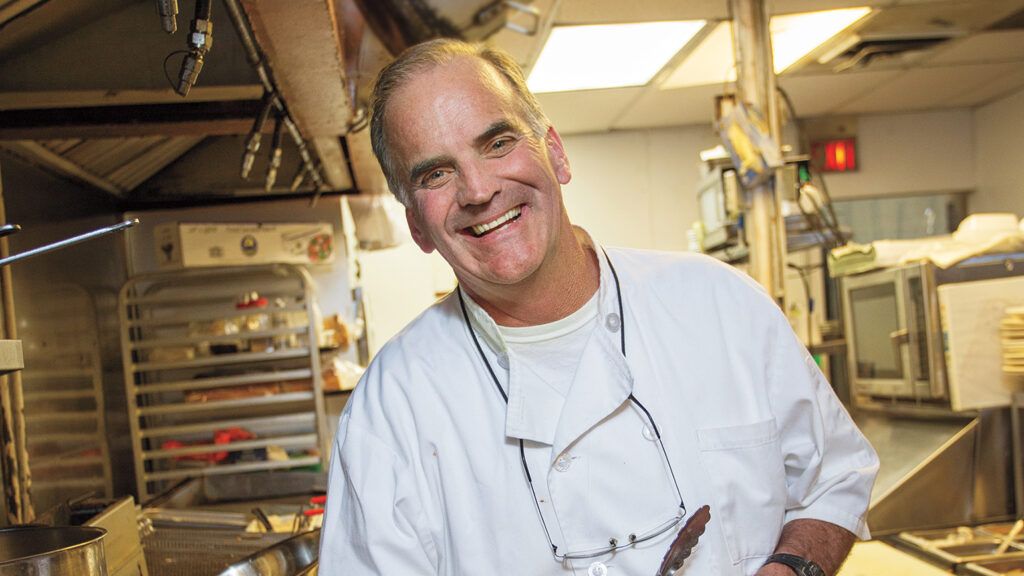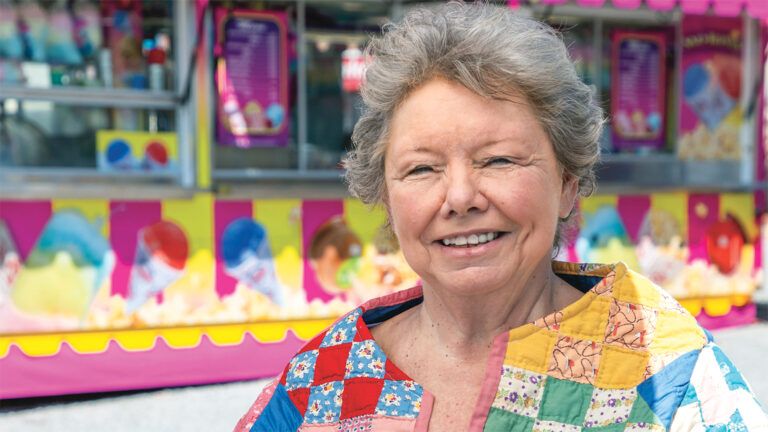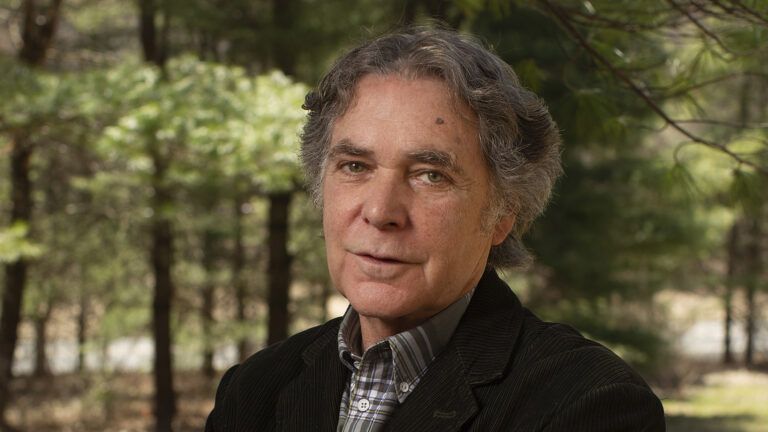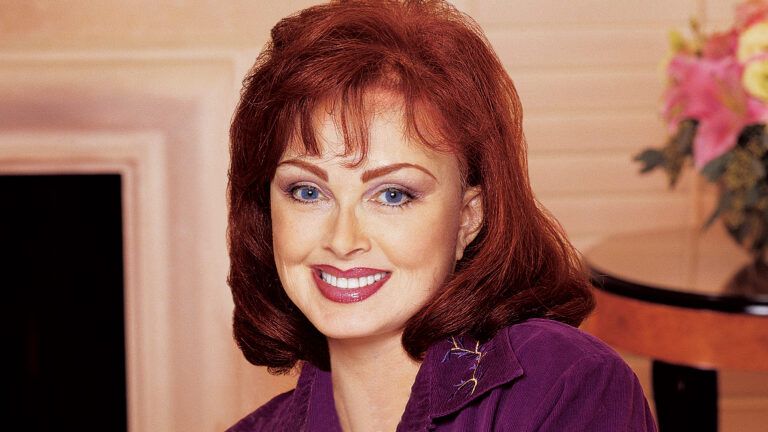My wife, Cathy, sat with me in the doctor’s office. I needed her there. It was hard for me to process what was being said. When you don’t get enough oxygen in your lungs, it affects your brain too. After three years of seeing specialist after specialist with no diagnosis, I was depressed. I was constantly sick, too weak to help around the house, struggling for every breath and so exhausted I could barely work.
The doctor looked up from my chart, peered over his glasses and said, “Sean, from all that you’ve said and what the tests show, I think you have the beginnings of COPD.”
COPD. Chronic obstructive pulmonary disease. It was like getting a death sentence. I’d read enough to know: There was no cure. It could only get worse. I’d be wheezing till the end. Cathy held my hand. She asked a few questions, but I hardly heard the answers. I wanted to get out of that office as fast as I could. COPD—the worst news I could have imagined.
I’d watched both of my parents die of lung-related diseases. They puffed on cigarettes all day long. Dad would fall asleep with a cigarette in his mouth— amazing the house didn’t burn down. He owned a tile-setting company, and my brothers and I helped in the family business. Inhaling clouds of powdered cement, breathing in construction debris. Dad’s first bout with cancer came when he was 40—and yet he lived another 48 years, hauling around an oxygen tank with him. Mom was diagnosed with emphysema decades after Dad got cancer.
I wasn’t going to be like them. I had smoked in my early twenties, then given it up. I was intent on living healthily. I ran marathons, swam at the Y, worked out at the gym, played soccer with my buddies, tossed a football with our kids. Call me a fitness fanatic. That’s fine by me. I wanted to rewrite the family script.
Then I turned 50, and things started to go wrong. Way wrong. I’d go for a run and develop an intense headache, tightness in my chest, a wheeze. I’d drag myself inside. “Gosh, the air is heavy today,” I’d say to Cathy. She’d look at me, mystified. “Sean, the air is just like it was yesterday.” Not to me.
At Soccer City, where our men’s team played, I’d find myself subbing out after just a few minutes, gasping for breath. I’d sit on the bench, take a break and then go back in. Same thing all over again. During morning swims at the Y, I’d start to choke after just a couple laps. I’d get out and hack up a white, gooey phlegm-like substance.
“This only happens when I swim,” I told the lifeguard.
“Maybe you shouldn’t swim anymore,” he said.
Cathy and I owned a couple of restaurants. Normally I loved being at the center of things, savoring the food in the kitchen, acting as host in the dining room, getting to know the customers. If your name is on the business—Sean Cummings Irish Restaurant—people expect to see you. But then I’d come down with some respiratory infection and be out of commission for a week or two. One of my doctors put me on steroids, but they made me so grouchy that all the employees avoided me.
Worst of all, Cathy and I couldn’t even sleep in the same bed anymore. I’d drift off, propped up with pillows against the headboard. Then I’d wake up with a coughing fit, hacking away till I thought my lungs would collapse. It frightened her to death. Frightened me too.
“You look too healthy to be this sick,” more than one doctor had said. Small comfort in that. I just wanted an answer. I got X-rays, CT scans, MRIs. A host of scary possibilities were ruled out—lung cancer, asthma, emphysema, bronchitis, allergies—but I still felt bad. Cathy and I were burning through our savings. We couldn’t go on like this much longer. Why couldn’t anyone tell me what was wrong and fix it?
Now I knew. COPD was chronic. There was no fix. Cathy and I returned home from that doctor’s office. I wanted to curl up and die. Didn’t want to see anybody, didn’t want to go to the restaurants, didn’t even have the heart to ask anyone for prayers. In my big Irish Catholic family, I had a priest for an uncle and a couple aunts who were nuns. I could imagine them delivering some bromides about faith and trusting in God’s way. I didn’t want to hear any of that.
One morning, I sat alone in the kitchen, nursing a cup of coffee, my favorite sports radio talk show in the background. I wished the noise would drown out my sorrow. One of my first jobs had been washing dishes at a neighborhood restaurant, radio blaring. I was so young, I had to stand on a milk box to reach the sink. Turned out to be pretty good preparation for what I ended up doing. What better way to know what people like—and don’t like—than seeing what they leave on their plates?
“They need to quit serving that crud because no one’s eating it,” I would joke with a buddy, scraping a plate of some uneaten “specialty of the house.” I wished I could scrape my own plate clean of all the crud it was serving up: anger, despair, self-pity.
How do you know what works at a restaurant? You didn’t just look at the upside—all those nice people sitting at their tables—you look at the downside too. What isn’t working, what can be fixed, what is left on the dirty dishes. I wanted badly to run away from COPD. But that wasn’t going to solve anything. I needed to stare it in the face.
Just then a voice boomed from the talk radio show: “It’s not about the knockdown but the ‘get up,’” one of the hosts said. I’d heard those words before and plenty like them. This time they seemed directed right at me, a message. Where was my ‘get up’? Hadn’t I always been a fighter?
I started reading everything I could about COPD online. What doctors said, what other patients did to help themselves, what medicines might work. I found I had to be careful; you can’t trust everything on the web. Some of what I read was alarmist, some seemed like quackery, and some made good sense. I gave myself a list of things to focus on, things I could do every day: get exercise, eat healthily, practice prayer and meditation and focus on special breathing techniques. That was my “get up.”
I couldn’t run like I used to, but I could do a combination of jogging and walking. I would drive to the lake near our house and start making my way around the trails. I would kick up my speed. Until I had to slow to a walk. Walk, run, walk, run.
Afterward I would lie in the grass and take in the fresh air, doing some breathing techniques I’d found on YouTube. Exercises to open my lungs. I closed my eyes and asked God to clean any impurities out of my body. I imagined a plunger pushing out the disease, wiping it out of my system. I swung my arms and legs over to one side, then the other. I pictured Jesus like a laser, cleaning and scrubbing as I breathed.
Every morning started with quiet meditation, 15 or 20 minutes. I would read a devotion or listen to a podcast, then go into silent prayer. I focused on my breath and imagined taking in clean, clear air and exhaling dark, dirty air—like those dishes I washed as a kid.
I made sure what I ate was healthy. Whole grains, lots of fruits and vegetables, fish, chicken. I kept a food journal. Over time I discovered what worked and what didn’t. For instance, if I ate anything with white flour, I’d get sluggish and tired. Same with oily foods or anything fried. I was glad to have my restaurant background. Not only could I make sure I made healthy choices, but we could add some healthy choices to our menu.
My doctor prescribed various medicines. It took almost 18 months before we settled on the right one. I had to be very patient and very honest. With both my physician and the Great Physician. I trained myself to thank God every day for the life I had. I’ll admit i get frustrated at times. I crash and have to slow down. I retreat to the house and take to my bed, sleeping for hours. It’s easy to feel sorry for myself, but I limit those times. I actually set the timer on my phone and give myself 15 minutes to indulge in anger, despair, sorrow. Then the timer buzzes, and I shake it all off.
I am able to be back in the restaurant, back with people, back doing the work I love. I don’t hide what I’m going through. I talk about it. Yes, I have a chronic disease. I also have something else to go with it: chronic hopefulness.
That’s what I’ve discovered. Hope is something you can work at. You can put it on the menu, you can dish it out, you can consume it whole. I got a diagnosis that seemed like a death sentence. Instead I found a way to make a new life.
For more inspiring stories, subscribe to Guideposts magazine.





